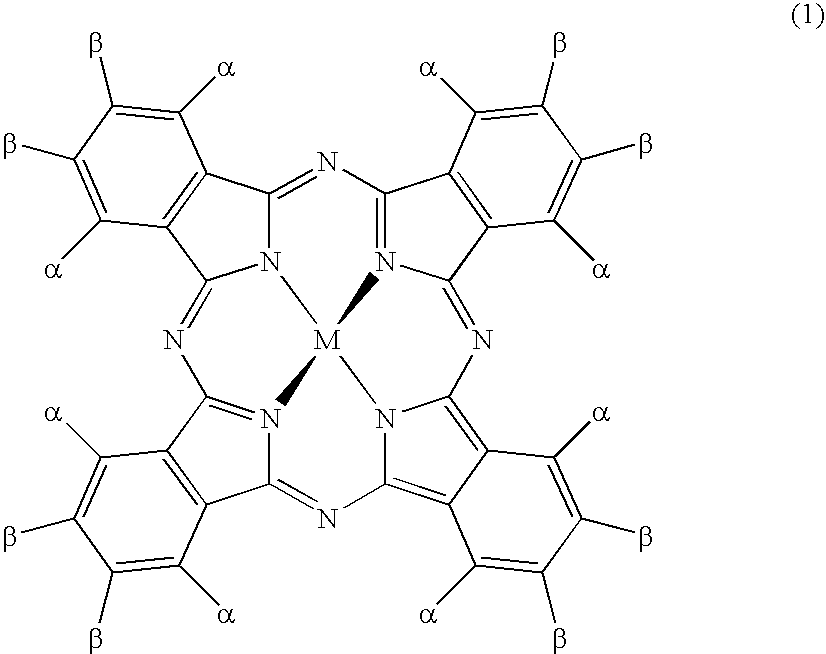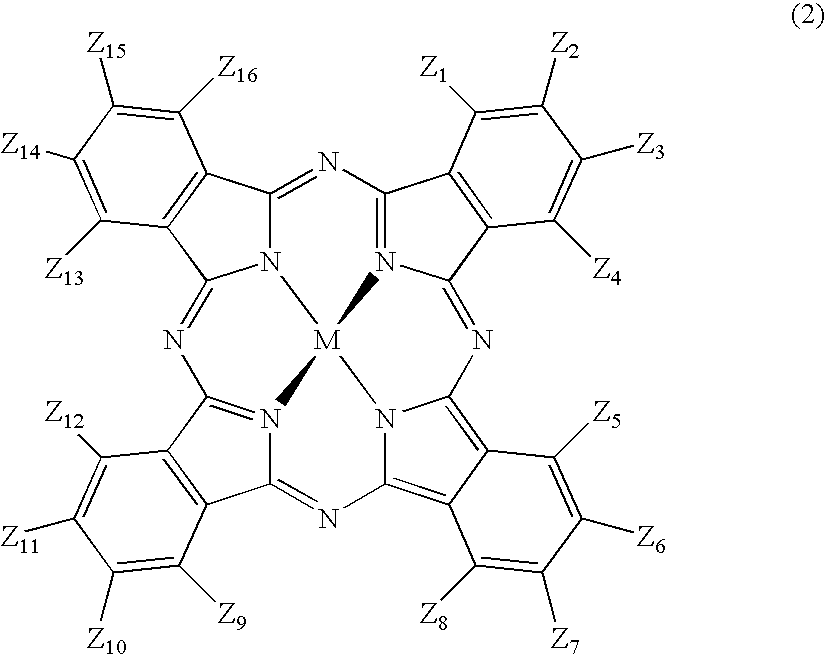Pressure-sensitive adhesive composition
a technology of adhesive composition and pressure, applied in the direction of film/foil adhesives, non-macromolecular adhesive additives, transportation and packaging, etc., can solve the problems of deterioration of dyes, erroneous operation, and failure to maintain the near-infrared absorbing capacity for a long tim
- Summary
- Abstract
- Description
- Claims
- Application Information
AI Technical Summary
Benefits of technology
Problems solved by technology
Method used
Image
Examples
synthesis example 1
Dropwise Monomer Polymerization Method
[0170] 358.2 g of 2-ethylhexyl acrylate (2EHA), 240 g of cyclohexyl methacrylate (CHMA), and 1.8 g of 2-hydroxyethyl acrylate (HEA) were weighed and thoroughly mixed up (the resulting mixture is hereinafter referred to as “monomer mixture (A1)”). A 40% portion of the monomer mixture (A1) and 196.4 g of ethyl acetate were weighed and placed in a flask equipped with a thermometer, stirrer, inert gas inlet tube, reflux condenser and dropping funnel. The remaining 60% portion of the monomer mixture (A1), 16 g of ethyl acetate, and 0.72 g of the polymerization initiator Nyper BMTK 40 (trademark, product of NOF Corp.) were placed in the dropping funnel and thoroughly mixed up (this mixture is hereinafter referred to as “monomer mixture (B1)”). The flask inside temperature was raised to 85° C. while appropriately passing 20 mL / minute of nitrogen gas through the flask. 0.96 g of the polymerization initiator Nyper BMTK 40 (trademark, product of NOF Corp...
synthesis example 2
Batchwise Monomer Polymerization Method
[0171] 209.1 g of 2EHA, 60 g of CHMA, 0.9 g of HEA, 30 g of RUVA-93 (trademark, product of Otsuka Chemical Co., Ltd.), and 245 g of ethyl acetate were weighed and placed in a flask equipped with a thermometer, stirrer, inert gas inlet tube, reflux condenser and dropping funnel. The flask inside temperature was raised to 85° C. while appropriately passing 20 mL / minute of nitrogen gas through the flask. 0.6 g of the polymerization initiator Nyper BMTK 40 (trademark, product of NOF Corp.) was charged into the flask and the reaction was initiated thereby. The reaction was carried out for 90 minutes. A mixed solution composed of 0.3 g of the polymerization initiator Nyper BMTK 40 (trademark, product of NOF Corp.) and 15 g of ethyl acetate was added in two divided portions to the flask at a 1-hour interval (for residual monomer reaction). The maturation reaction was carried out at 80° C. for 150 minutes, 155 g of toluene was added, and the reaction ...
synthesis examples 3 to 5
Batchwise Monomer Polymerization Method)
[0172] A pressure-sensitive polymer (A-3), pressure-sensitive polymer (A-4) and pressure-sensitive polymer (A-5) were obtained in the same manner as in Synthesis Example 2 except that the respective monomer compositions specified in Table 1 were employed.
PUM
| Property | Measurement | Unit |
|---|---|---|
| hydroxyl value | aaaaa | aaaaa |
| hydroxyl value | aaaaa | aaaaa |
| glass transition temperature | aaaaa | aaaaa |
Abstract
Description
Claims
Application Information
 Login to View More
Login to View More - R&D
- Intellectual Property
- Life Sciences
- Materials
- Tech Scout
- Unparalleled Data Quality
- Higher Quality Content
- 60% Fewer Hallucinations
Browse by: Latest US Patents, China's latest patents, Technical Efficacy Thesaurus, Application Domain, Technology Topic, Popular Technical Reports.
© 2025 PatSnap. All rights reserved.Legal|Privacy policy|Modern Slavery Act Transparency Statement|Sitemap|About US| Contact US: help@patsnap.com



